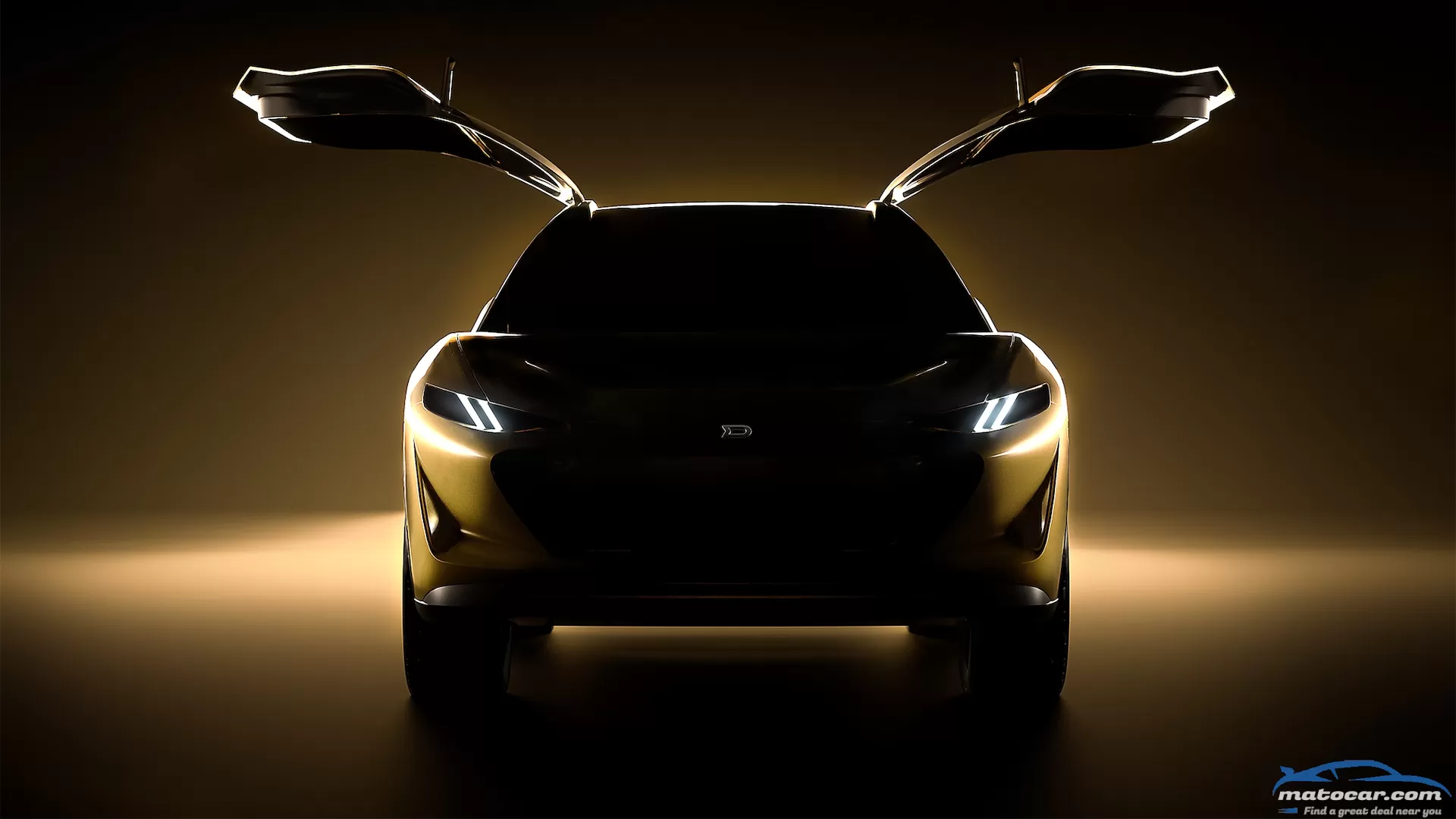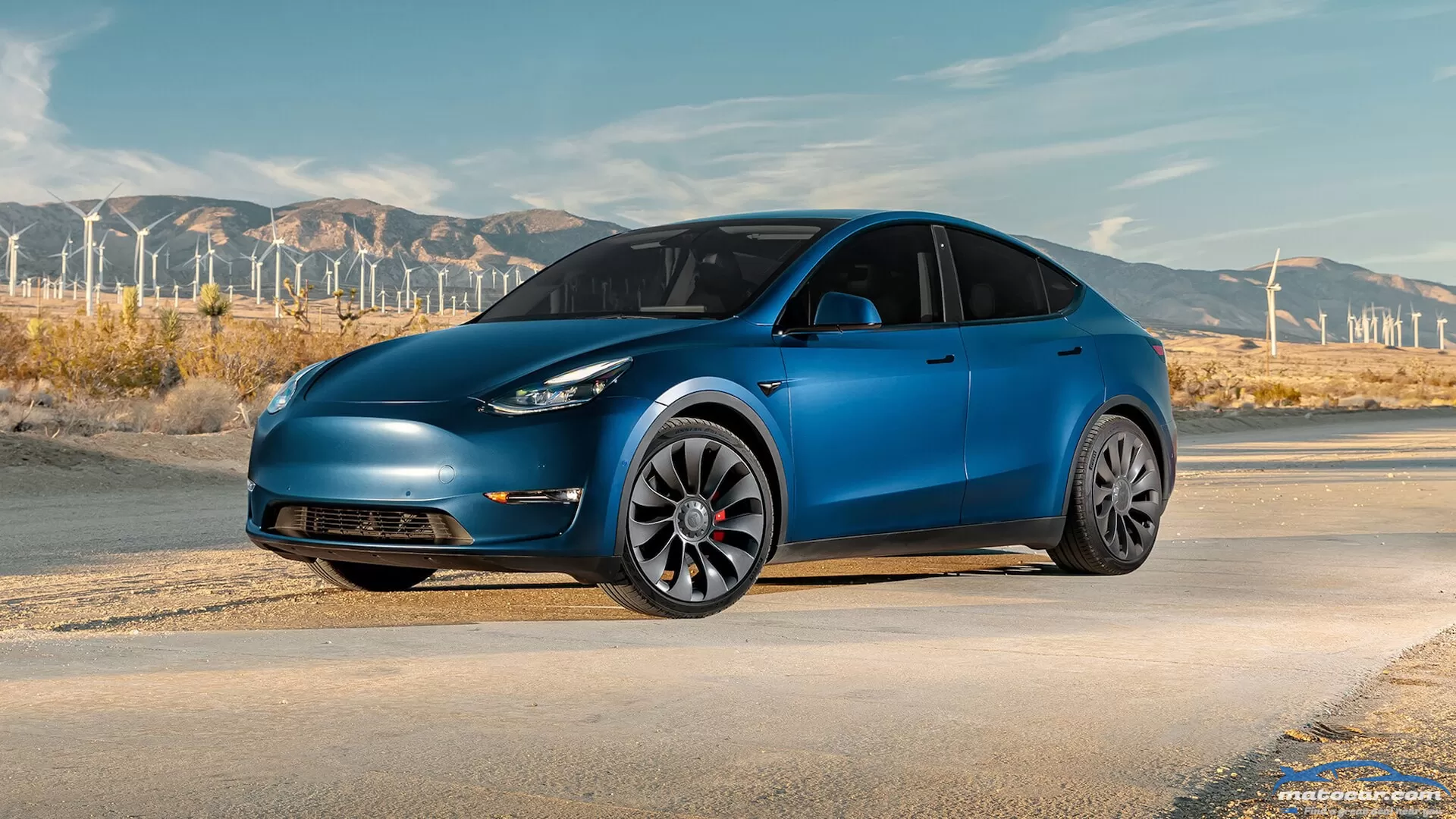The New Batmobile Looks and Sounds Absolutely Wicked in "The Batman"

UPDATE 3/4/22: "The Batman" is now in theaters, racking up a respectable 85 percent fresh rating on Rotten Tomatoes and appearing to be on a trajectory to cash in at the box office. But, for our purposes, the star of the movie isn't Robert Pattinson—its the muscular Batmobile, with its mid-mounted engine and an overall vibe that wouldn't be too out of place in a Mad Max film. And, like any good Batmobile, it seems to be a central part of the film, speeding through a Gotham City that's as dark and moody as ever, launching baddies' vehicles into the air to land with an explosive thud. Whet your appetite with a longer, more recent trailer below.
"The Batman" opens today in theaters, and will hit the HBO Max streaming service in mid-April.
The Batman director Matt Reeves just revealed the new Batmobile on Twitter, and it's a definite departure from past movie cars. The movie press had earlier heard rumors that the new Batmobile would be more of a muscle car than the military-inspired Tumbler that appeared in Christopher Nolan's Dark Knight film trilogy. That is exactly what we have here, although the mid-mounted engine is a bit of a surprise.
What we can see resembles a lot of different classic muscle cars, and that's probably intentional. The deeply recessed front headlamps have a generic late 1960s look to them: a bit of Mopar, a bit of Mustang, maybe even a hint of De Tomaso Mangusta. Extremely swoopy rear fenders with pointed trailing ends that hang over three-element taillights are the closest thing we get to a traditional Batmobile motif. The rear tubes of a roll cage poke through the C-pillars and trailing edges of the roof. It is likely completely custom bodywork over a tube frame or donor chassis, so there's probably not a single recognizable base underpinning this creation.
The longitudinally-mounted engine aft of the cabin is an enigma, but an awesome one. It appears to be a V-10—an OHV unit—with a couple of immense turbochargers that dump straight into the atmosphere behind the roof. If the movie magic gods are kind, it'll spit two tongues of delicious fire with every throttle blip. This Batmobile will be neither inconspicuous or quiet. There's obviously some extraneous fantasy bits tacked on to make it look more futuristic, but it seems like a real motor under there.
Remember, there are usually several movie cars built for various purposes: stunt cars that can take a jump without disintegrating, "hero" cars that look good in close-ups, a rig that makes it look like our new Batman (Robert Pattinson—yes, that guy, from the sparkly vampire movies) is actually driving it even though it's grafted to the front of some other vehicle. This is probably a "hero" car, so the wild-looking engine might not be what motivates the running/driving ones.
Even so, the Mad Max meets Fast and Furious vibe this new Batmobile gives off is a solid hint that this will be a movie that appeals to car enthusiasts on a deeper level. This reboot, the umpteenth since the 1989 Tim Burton movie, focuses on a more youthful Bruce Wayne/Batman with a greater focus on his detective work. There's surely going to be a lot of fighting, and given the unique direction that this Batmobile's design takes, we hope that there will be a lot of driving, too.
Update: This post, which originally published on March 4, 2020, has been updated with the latest trailer for "The Batman".
You may also like
mercedes-benz g-class Full OverviewMastery. It's exceedingly rare, though I've seen it with my own eyes a few times. Caught an Alfred Ladzekpo drum solo once. Front-row seats at a Johnny Cash concert a quarter of a century ago. Performances that transcended what feels possible and ascended to the realm of the magical. But what does any of this have to do with a China Blue 2021 Mercedes-AMG G63?I've driven more cars than I can count all over Los Angeles. None has received a more positive reaction. Human beings seemed to be universally smitten with this China Blue G. Some degree of mastery is needed to achieve so much positive feedback. But can this softly leathered, pastel blue G-wagen be a masterpiece when it's a universe away from its not-so-humble origins? Initially conceived by the Shah of Iran as a military vehicle, the G has transcended every definition and categorization car marketers can think of. Remember, Mercedes was done with the G-Class back around 2007, and the GL (now the GLS) was supposed to replace the icon. Didn't quite work out that way. A quickie Google just showed me a 2021 G63 with an MSRP of $190K and 1,100 miles on the clock on sale for $340,000. What other vehicle on earth does that?After spending 72 hours with this particular G and contemplating how the concept of mastery applies to it, what can I say? What can I add to the conversation about an SUV that's literally selling for $150K over sticker, used? A little bit, I hope.The G63 would be better as an EV. Here come the slings and the arrows, I know, but hear me out. Yes, the twin side pipes make an awesome noise. Only AMG could have figured out a way to make twin-turbocharged V-8s sound this deeply angry, and the short-piped G might be the loudest and most brutal of them all. However, the EPA estimations for this 5,784-pound solid steel wildebeest are 12/16/14 mpg—terrible, and that I barely cracked 10 mpg was even worse. I'd like to leave my son a world worth inheriting, and if this G were an EV, it would ever so slightly help move us toward that goal.Nearly three tons of China Blue fun is already heavy, and going electric would obviously make the thing even heavier. How heavy are we talking? The downright amazing Rivian R1T weighs about 7,150 pounds, and that's a bit more than the 6,750 pounds I bet an EV G would clock in at. The Rivian has four motors, while the the Mercedes-EQ EQS580 has but two. But even if the upcoming EQG580 (Mercedes' lousy nomenclature, not mine) weighs more than the Rivian, its efficiency will likely more than quadruple, as the R1T is EPA-rated at 74/66/70 mpg-e. That's, frankly, huge.An electric G would probably be quicker, too. Not that the current car is a slouch. Our test SUV hit 60 mph in a quick but not otherworldly 3.9 seconds. Does the 577-hp G63 have any real competition? Not really, and that's part of what makes it such an icon. The 5,122-pound Jeep Wrangler 392 with a 470-hp V-8 hits 60 mph in 4.2 seconds, whereas the 835-hp Rivian R1T does so in 3.1 seconds (or 3.2 with off-road tires).The G63's quarter-mile time is 12.5 seconds at 109.9 mph, which is respectable for a brick. Nearly as bricklike, the 392 is on the G's heels with a 12.9-second run, though its trap speed is just 100.4 mph. That Rivian truck? It initially smokes the AMG with an 11.6-second blast down the quarter (or 11.7 on the off-road meats). But note the R1T's trap speed: just 110.8 mph. Looks like the Rivian's accelerative advantage is over after 1,320 feet.As for braking, it took AMG two years after the G63 launched in 2019 to come up with 20-inch wheels that would fit over its massive rotors. China Blue here rode around on 22s. Braking from 60 mph took 116 feet, which is neither great nor bad. Pretty average for a passenger vehicle, actually. The Wrangler 392 takes a spooky 133 feet (though, sadly, that's decent for a Jeep Wrangler), whereas the R1T stops from 60 mph in an even worse 135 feet. Let's hear it for those 14.8-inch front/13-inch rear rotors.Around our figure-eight test track, the G63 pogoed its way around in 26.8 seconds, exactly as quickly as a Mini Cooper S Convertible. Not quite sure what that means. The Jeep 392 turned in an embarrassing 29.3-second performance. For various reasons, we have yet to figure-eight a Rivian, but we will. That said, heavy pickup trucks tend to perform poorly in that particular test.Aside from the dreadful fuel economy numbers and a comically expensive barrier to entry—this example stickers at $180,150, before dealers add on their cruel market adjustments—is there anything not to love about the 2021 G63? No, I can't think of anything. It's perfectly sized (about the same as a Wrangler Unlimited and four-door Ford Bronco), and around town, it's just a joy to drive. Especially if your idea of joy is imperious, effortless cruising that makes you feel like a master of the universe. To use the parlance of our times, G-Wagens just hit different.I've heard some rumblings about Mercedes' impressive MBUX touchscreen system being unavailable (yet) on G-Wagens, including from a friend I partially strong-armed into buying a G550. But he's since recanted, telling me, "I like the scroll wheel better than a touchscreen, and there are no fingerprints all over the place."Like most owners, he'll never take his G off-road. However, I have no such scruples, and I took a different G63 equipped with the new AMG Trail package on some pretty treacherous trails, and the luxo-truck performed admirably. Scraped its chin a few times, but that's nothing a 1-inch lift wouldn't solve.Are we talking about an automotive masterpiece? I wager we are. The 2021 AMG G63 is as close to the mythical notion of perfection as a vehicle is likely to get. Others playing on this elevated field? The Porsche 911. That's kinda it.Here's what I mean: If the excellent Honda Accord went out of production tomorrow, I'd be miffed, but a dozen competitors would eagerly step in to take its place. Did anyone lose sleep over the death of the Ford Fusion?Like Mercedes with the G-Wagen, there was a time when Porsche actively tried to kill off the 911. But exactly like Mercedes and the Geländewagen, Porsche just couldn't do it. Irreplaceable? Essentially. What both Stuttgart-based manufacturers figured out is that the world would be worse off if their icons weren't in it. If that doesn't make a machine a masterpiece, I don't know what does.Looks good! More details?SPECIFICATIONS 2021 Mercedes-AMG G63 BASE PRICE $157,500 PRICE AS TESTED $180,150 VEHICLE LAYOUT Front-engine, 4WD, 5-pass, 4-door SUV ENGINE 4.0L/577-hp/627-lb-ft twin-turbo DOHC 32-valve V-8 TRANSMISSION 9-speed automatic CURB WEIGHT (F/R DIST) 5,784 lb (54/46%) WHEELBASE 113.8 in LENGTH x WIDTH x HEIGHT 191.9 x 79.3 x 77.4 in 0-60 MPH 3.9 sec QUARTER MILE 12.5 sec @ 109.9 mph BRAKING, 60-0 MPH 116 ft LATERAL ACCELERATION 0.78 g (avg) MT FIGURE EIGHT 26.8 sec @ 0.68 g (avg) EPA CITY/HWY/COMB FUEL ECON 13/16/14 mpg ENERGY CONS, CITY/HWY 259/211 kWh/100 miles CO2 EMISSIONS, COMB 1.37 lb/mile Show All
The Drako GTE electric supercar first whizzed upon the car scene during the 2019 Monterey Car Week. It wooed onlookers with its Fisker Karma platform, carbon-fiber body designed by ex-Pininfarina design director Lowie Vermeersch, and exclusive Drako Motors Drive OS vehicle-management system technology. The performance-oriented electric car was more about the love of driving and a passion for awesome sports cars than it was about economy, value, and saving the planet—the standard talking points of mass-produced EVs. It was a lovable car developed by Dean Drako and Shiv Sikand, successful Silicon Valley software entrepreneurs and avid car fans—who just wanted a better-driving car than what they were finding.It's likely you won't find any of these $1.25-million Drako GTEs on the road, if not for the astronomical price, but for the fact that Drako intends on building only 25 units. Some of our MotorTrend staffers were fortunate enough, though, to experience the GTE's four-motor drive system pushing 1,200 horsepower. It was described as "the first electric car we've driven that really feels entirely like a new kind of vehicle. " Its responsiveness, agility, and stability were remarkable. Basically, the thing was dialed. Drako hinted at another model, way back at the end of 2019, pending the success of the company's GTE. "Our next car, which we can do in about a year, will be targeted at around 4,500 pounds," Sikand said. "We'll build 99 of them, at half the price of the GTE. That puts me squarely in Lamborghini Aventador and Ferrari 812 Superfast territory. And I can eat those cars." Sikand smiled at the thought. "That's what we're going to do: provide cars that are just amazing to drive, totally guilt-free, and fast as hell. "'Fast-forward about two years, and it seems Drako Motors' aspiration for another model has come to fruition. It's called the Drako Dragon, and while we don't have all the specifics quite yet on this five-seater, one thing's for sure: it's the GTE on steroids. Everything Drako learned from the GTE, it applied to the Dragon. Drako, when speaking of (some iteration of) the Dragon openly on its website, considered the Dragon an upgrade of the GTE, significantly redesigned and upgraded with essentially no system untouched, "the new pinnacle of electric vehicle performance."Like the GTE, the Drako Dragon was designed by Drako Chief Designer Lowie Vermeersch and his Italian GranStudio team. The Dragon's silhouette shows that it has generous ground clearance with broad, aerodynamic hips. It's a curvy gullwing SUV. Drako touts "world-class" passenger comfort within its five-seat cabin, abundant luggage capacity, and "world-beating" luxury and performance.Like the GTE, the Dragon will use Drako's DriveOS Quad Motor powertrain (allowing for individual control of each wheel's positive and negative torque) and Drako's in-house battery system. The the 2,000-hp Dragon should reach a top speed of over 200 mph, sprint to 60 mph in 1.9 seconds, and achieve a 9.0-second quarter-time. Those figures would be surprising—if there was no GTE paving its way. A three-stage suspension system helps smooth roads and trails alike. Yes, Drako mentioned trails and off-road ability.As for the price of the Drako Dragon? We don't have a figure, but it's apparently competitive with the existing super-SUV segment—albeit with double the horsepower. Considering the GTE is over a million buck-a-roos, the Dragon could still easily top the Aston Martin DBX, Bentley Bentayga, Lamborghini Urus, and Rolls-Royce Cullinan, for example.As for the guys behind the Drako GTE and now the Dragon—they'll never compete with Elon Musk's Tesla, and they're perfectly fine with that. During an interview with MotorTrend, Shiv Sikand commented, '"We're crazy. You know, I was down in Newport Beach. I met one of the main guys out there who've been around in the industry for a long time. He says, 'Why are you getting into the car business?' Looking at me stupidly, like 'is there something wrong with you?' I'm like, 'yeah, there's something wrong with us. You know, Dean [Drako] and I are kind of crazy. '"'
A proposed West Virginia bill outlines multiple new strict guidelines for automakers to adhere to in their relationship with dealership networks, including a ban on some (increasingly prevalent) over-the-air software updates that change the driving functionality of the car. Updates to mapping and infotainment systems would still be kosher, but anything that changes how the car drives could soon be off the table, including important safety updates.The new motion, introduced by the West Virginia automotive dealership trade association, according to GM Authority, is an amendment to current West Virginia House Bill 4560. The previous version simply mentioned all warranty and recall repair work had to be performed by a dealership, but the new text is what stipulates new rules for the burgeoning trend of over-the-air driving updates. Here's what it says:Over-the-air (OTA) updates, where an automaker can tweak, update or repair glitches, features and hardware with software downloaded into the car's computer system over an internet connection, are a relatively new feature in modern cars. The concept allows minor fixes to be rolled out as soon as they are ready to go in the car, without the owner or operator ever having to actually take the car to a service station.Luxury vehicles more bent toward the tech-friendly crowd have been the early adopters, especially the Tesla Model S, Chevy Bolt, Lucid Air, Porsche Taycan, and more. OTA updates are a useful tool, and as more cars produced come with onboard data connections, it's a tool that's spreading rapidly.If you're wondering why dealers would want you to need to drive your car to the dealership for any non-infotainment system update, well it of course is all about money. It would seem the West Virginia dealer's association views OTA updates as a potential financial risk. Since there are no parts costs in software fixes, dealers don't want to see the labor charges for any vehicle updates (warranty or recall related or otherwise) dry up, as well, just because your car is connected to the internet.Dealerships also recognize the importance of getting you to their lots to service your car: you can shop for a new one while you wait. And that's why the proposed updates to the bill would also ban automakers from selling vehicles directly to customers in WV outside of the dealer model. From the bill:"This part is similar to other nationwide bans on direct-sales, which are often also heavily defended by local dealership trade groups. You may remember Tesla taking quite a few fights to states like Michigan, where direct sales to customers are not allowed and cars must be sold through a franchised dealership network. Today, Tesla has to sell cars to Michigan owners out of state, and established a subsidiary company to open servicing locations in the state.Obviously, these new proposals in HB4560 would be bad for consumers in West Virginia. First, their cars would no longer be allowed to receive potentially significant instant updates that could impact all aspects of their car, from driving range, interior controls, drive-mode settings, and safety system updates. Instead, it would put a cost on those things for customers directly, both in time spent getting the car needlessly serviced, and in the potential dealer fees you'll have to pay for something that's free to owners in other states.On top of that, if you wanted to avoid the dealership model altogether to buy a new car for yourself, you would not be allowed to without going out of the state. We don't see any upside for the vehicle owner in the proposed legislation, and CleanTechnica reports a lobbying group, Alliance for Automotive Innovation that represents many Japanese automakers, publicly spoke out against the proposals. The bill in its current form has nine sponsors in the State House and passed through its second reading today; we expect more lobbying groups or potential statements from automakers and other groups until the bill passes, or the proposals are modified.




0 Comments